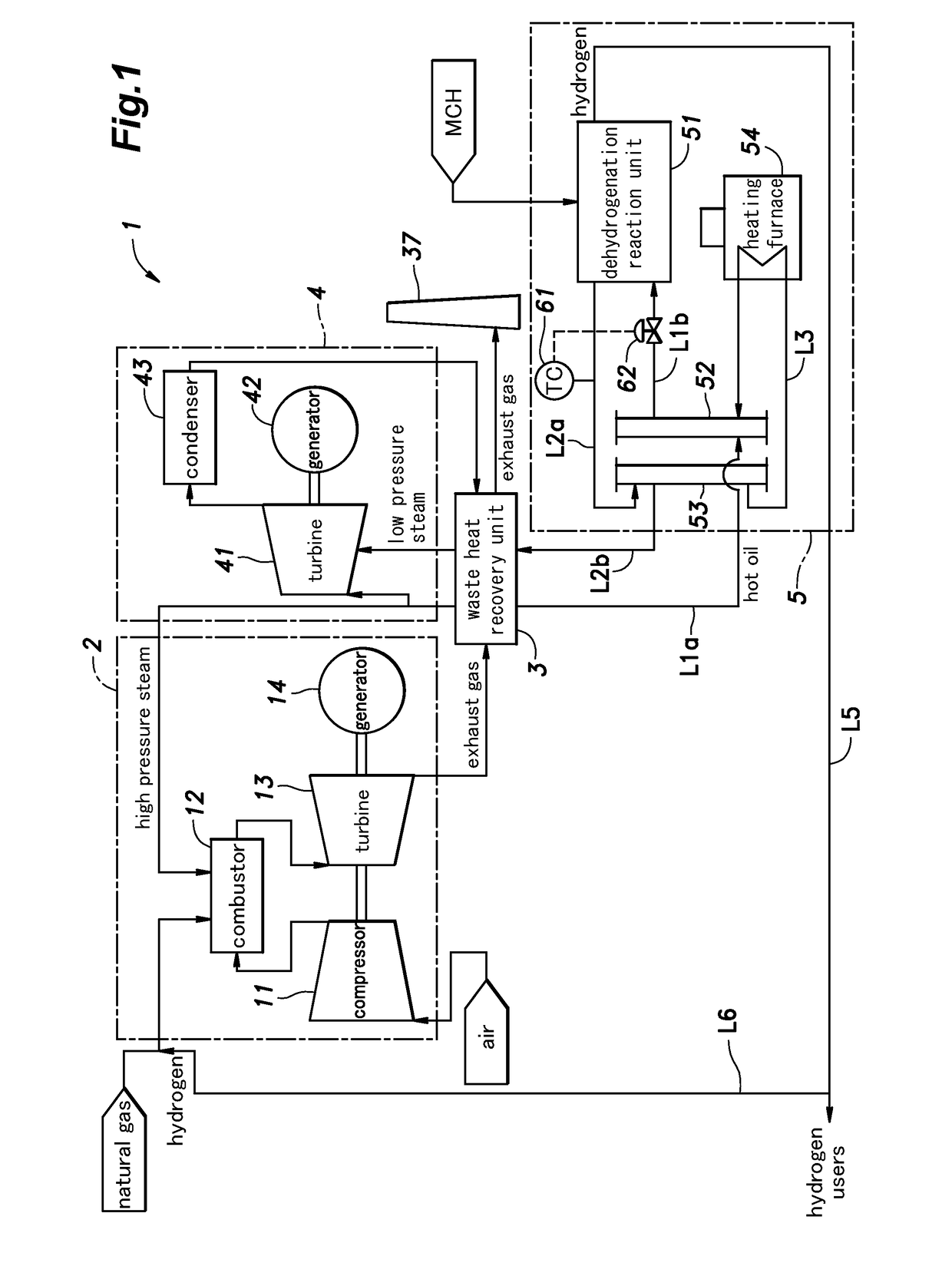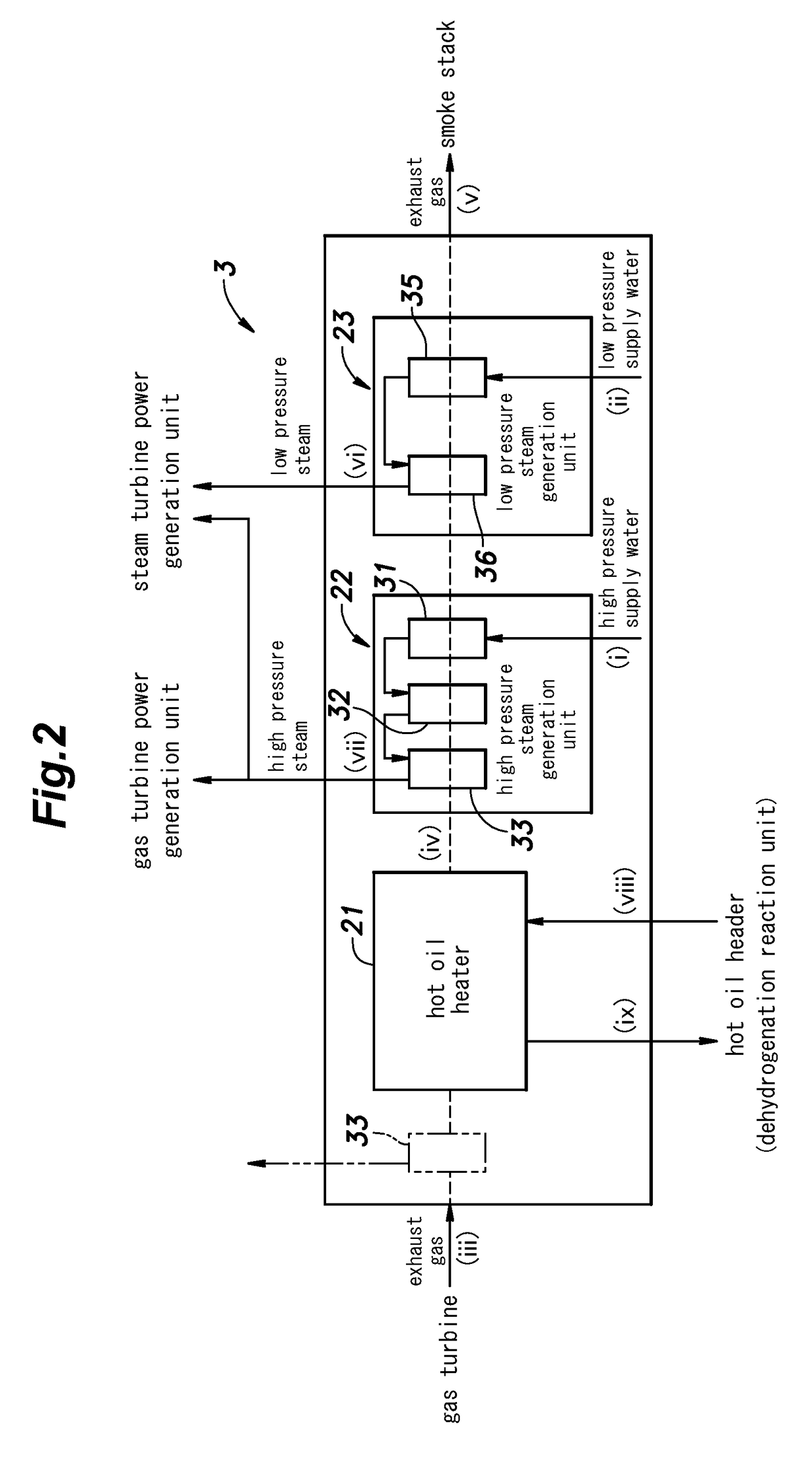System and method for producing hydrogen
a hydrogen and system technology, applied in the direction of machines/engines, sustainable manufacturing/processing, lighting and heating apparatus, etc., can solve the problems of reducing selectivity, reducing the efficiency of heat exchange using exhaust gas, and prone to dehydrogenation catalysts, so as to reduce reaction selectivity and minimize the degradation of dehydrogenation catalysts
- Summary
- Abstract
- Description
- Claims
- Application Information
AI Technical Summary
Benefits of technology
Problems solved by technology
Method used
Image
Examples
Embodiment Construction
)
[0026]A preferred embodiment of the present invention is described in the following with reference to the appended drawings.
[0027]FIG. 1 is a block diagram showing the simplified overall structure of a hydrogen production system embodying the present invention, and FIG. 2 is a schematic diagram showing the details of the waste heat recovery unit 3 shown in FIG. 1.
[0028]As shown in FIG. 1, the hydrogen production system 1 primarily consists of a gas turbine power generation unit (first power generation unit) 2 for generating electric power from the energy of the combustion gas produced by the combustion of fuel, a waste heat recovery unit 3 for recovering the heat of the exhaust gas expelled from the gas turbine power generation unit 2, a steam power generation unit (second power generation unit) 4 for generating electric power from the energy of the steam generated by the waste heat recovery unit 3 and a hydrogen production unit 5 for producing hydrogen by the dehydrogenation react...
PUM
| Property | Measurement | Unit |
|---|---|---|
| temperature | aaaaa | aaaaa |
| temperature | aaaaa | aaaaa |
| temperature | aaaaa | aaaaa |
Abstract
Description
Claims
Application Information
 Login to View More
Login to View More - R&D
- Intellectual Property
- Life Sciences
- Materials
- Tech Scout
- Unparalleled Data Quality
- Higher Quality Content
- 60% Fewer Hallucinations
Browse by: Latest US Patents, China's latest patents, Technical Efficacy Thesaurus, Application Domain, Technology Topic, Popular Technical Reports.
© 2025 PatSnap. All rights reserved.Legal|Privacy policy|Modern Slavery Act Transparency Statement|Sitemap|About US| Contact US: help@patsnap.com



